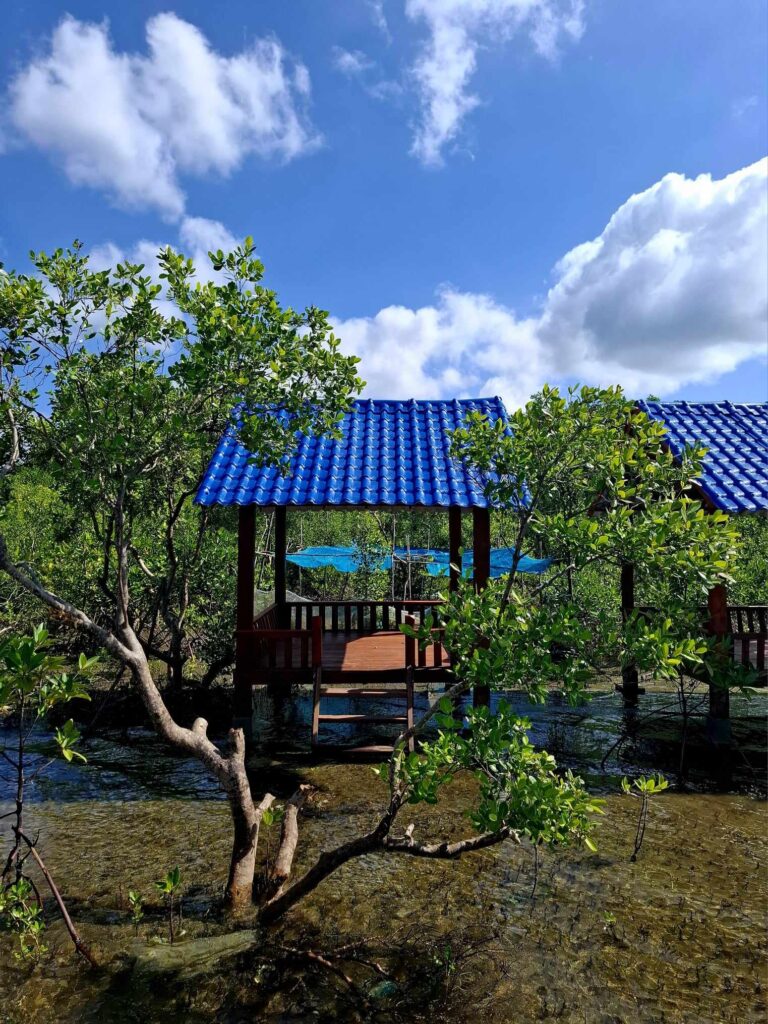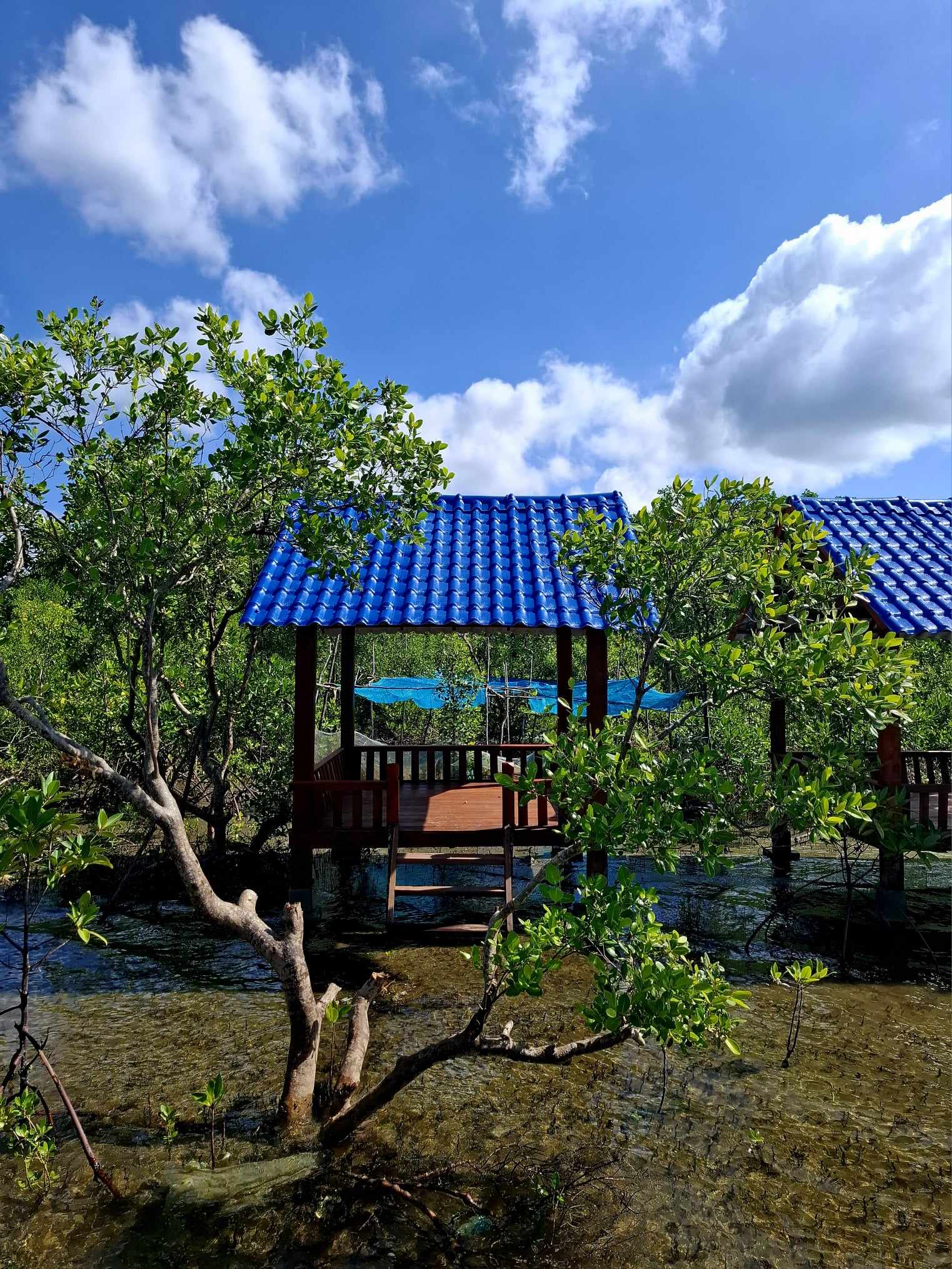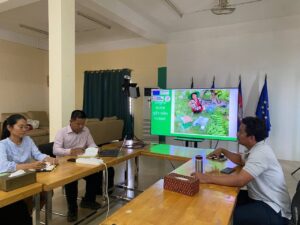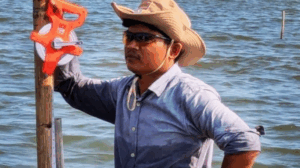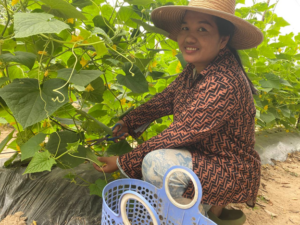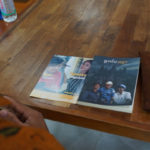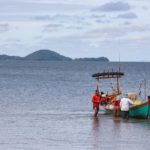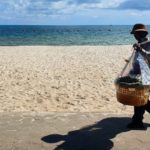In the heart of Cambodia’s mangrove forests, a quiet initiative is taking place – one that brings together nature, education, and the spirit of local communities. As mangroves are crucial for coastal protection, biodiversity, and carbon sequestration, the installation of shaded huts is a thoughtful initiative to protect these delicate ecosystems, raise awareness of their importance, and provide visitors with a place to rest.
In coastal areas, the delicate mangrove ecosystems that local communities have long depended on are threatened by tourism. Infrastructure development clears vital forests for profit, while careless actions – such as walking through mangroves, dumping waste, and leaving plastic litter – damage their roots, seedlings, and fragile sediment. These exploitative practices harm the environment and undermine the traditional livelihoods of fishing communities who depend on these ecosystems.
The CO-SAVED project, co-led by Action Education / Aide et Action (AEA) and co-funded by the EU, stands alongside local communities in challenging these threats by promoting responsible tourism and eco-friendly destinations. At the heart of our partnership is a commitment to reclaiming environmental sustainability and empowering local communities, ensuring they have the power and resources to protect what is rightfully theirs.
Key strategies to mitigate the harmful effects of tourism on the environment, communities, and ecosystems include: designating protected areas, limiting access, educating visitors, and investing in sustainable infrastructure. One of the measures is the installation of shaded huts, which provide visitors with designated rest areas, reducing foot traffic and physical damage to the fragile mangrove ecosystems.
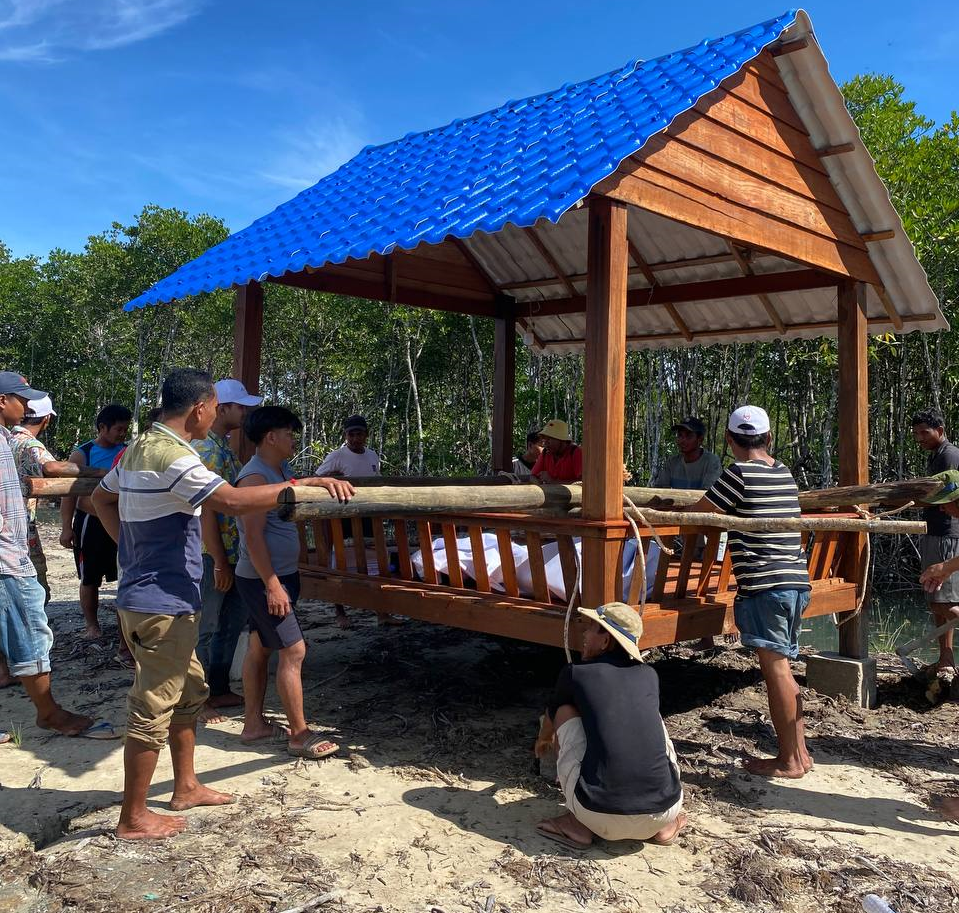
At eco-tourism sites in Kep and Kampot like Trapeang Sangkae and the mangrove forests cared for by the Phum Thmey and Kampong Samaki communities, the provision of huts is helping to restore balance. By attracting more visitors, these shaded shelters help generate sustainable income that directly supports local communities. These communities are proving that tourism and conservation are not mutually exclusive – they are, in fact, inseparable in creating a future where both nature and people thrive.
Education: Sparking Curiosity and Responsibility
The installation of shaded huts is more than just a comfort for visitors – it’s a vital step toward preserving the mangrove forests. These strategically placed resting areas help direct visitors, ensuring they remain on designated paths and prevent harm to the lush vegetation and wildlife that inhabit the forest. By offering tourists spaces to pause and enjoy breathtaking views of the water and trees, we reduce their environmental impact, leaving the mangroves undisturbed.
Every step counts in our mission to protect this vital ecosystem.
But the huts are not just for tourists—they also serve as places of learning and connection for local communities. Here, schoolchildren can play and explore, discovering the importance of mangrove planting and the crucial role these trees play in climate resilience.
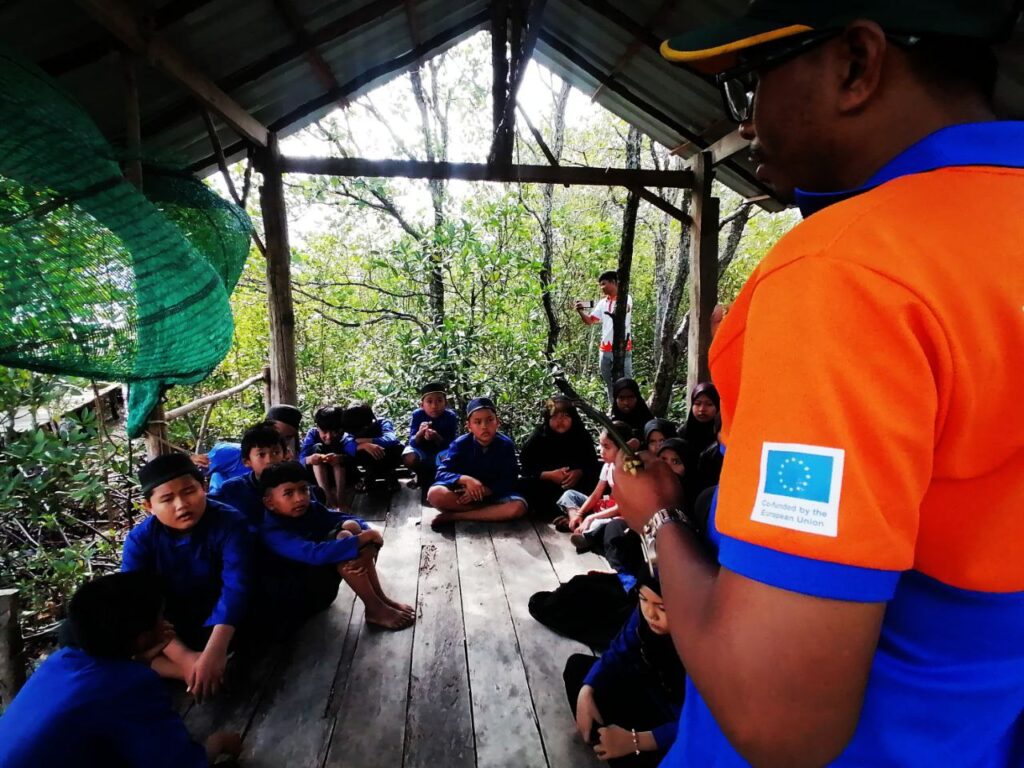
In July 2024, students from Sbov Primary School, aged 8 to 12, giggled and dashed across the wooden footbridge that spanned Kep’s lush mangrove forest. With great enthusiasm, these young environmental champions set out to help protect wildlife by planting seeds in the “nursery for baby mangroves.” At the end of the day, each child received a cob corn as a reward for their shared victory in the battle against climate change.
The huts transform into classrooms where young minds are inspired to become the next generation of environmental protectors, fostering a sense of responsibility and respect.
Shaded Shelters, Sustainable Livelihoods
These eco-friendly huts are not only part of environmental and educational efforts – they also offer economic opportunities, directly benefiting local communities. By providing a comfortable space for visitors to rest, they encourage longer stays and repeat visits, which in turn boosts the local economy.
Nhos Nhep, deputy chief of the Phum Thmey community, highlighted the economic potential of these huts. “They are available for rent, with prices ranging from 2,500 riels (about $2.50) to 30,000 riels ($7.50), depending on the season, group size, and length of stay,” he said. “We need more visitors, more clients to support and promote the mangrove forest in Kep.”
The ripple effect of responsible eco-tourism extends to local businesses, with hut rentals, food stalls and boat tours, all thriving as tourists engage with the community. These shaded huts help to create a steady flow of income, enabling local families to sustain their livelihoods while protecting the natural environment that attracts visitors.
The hope is to attract eco-conscious travelers who seek to immerse themselves in nature without causing harm. Every visit supports local families, protects nature, and fosters a more just, sustainable world.
